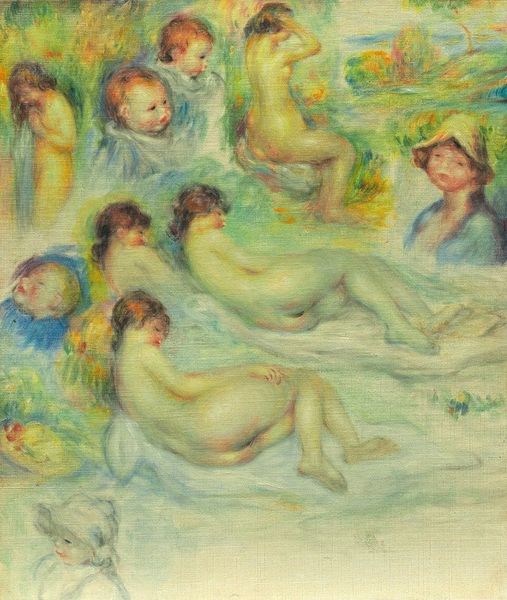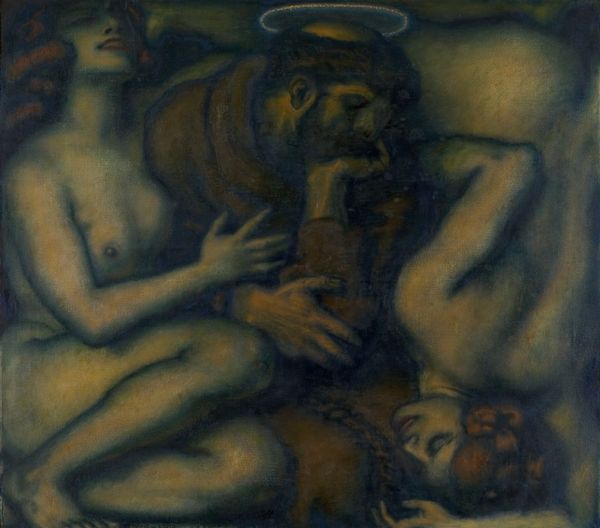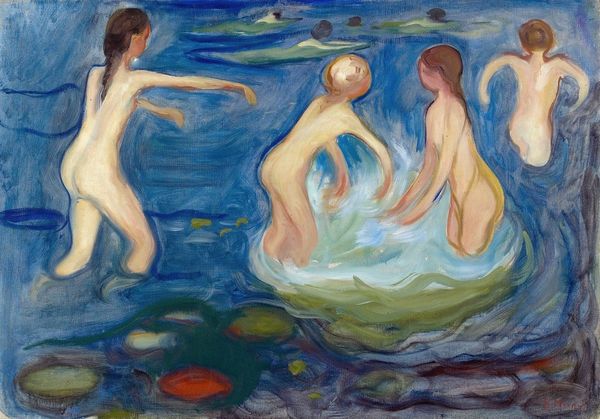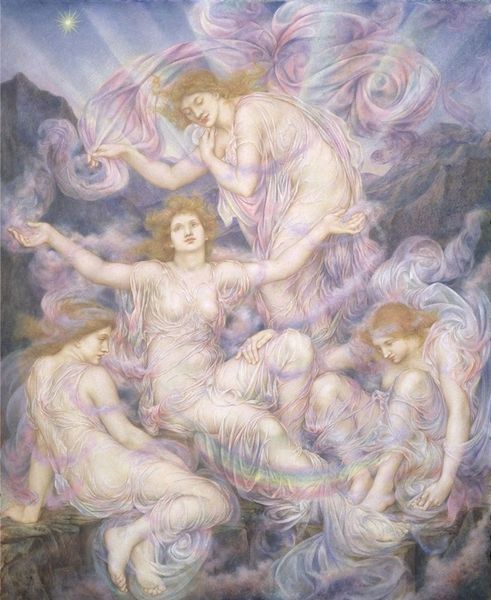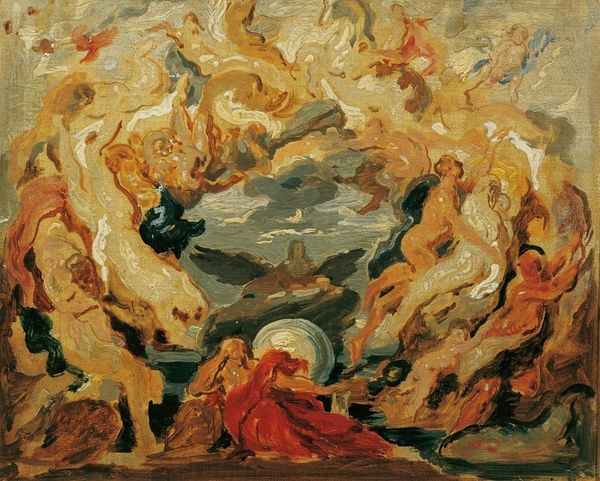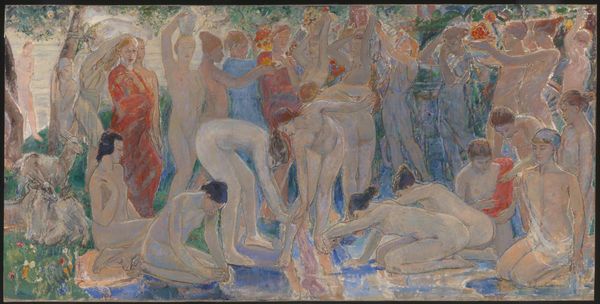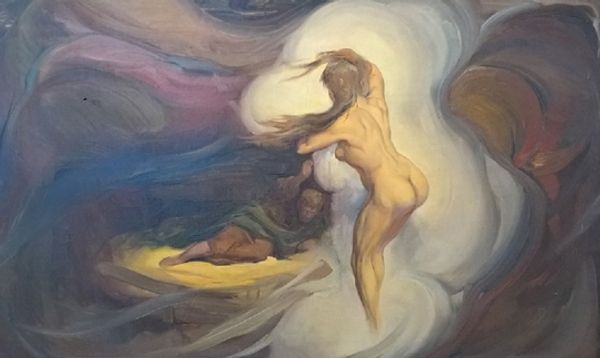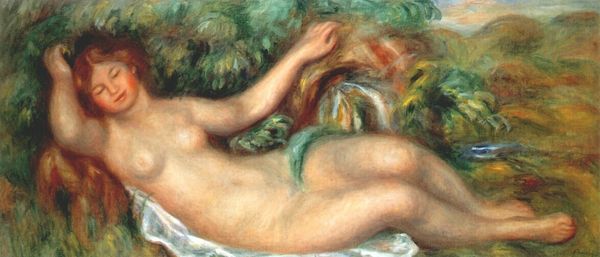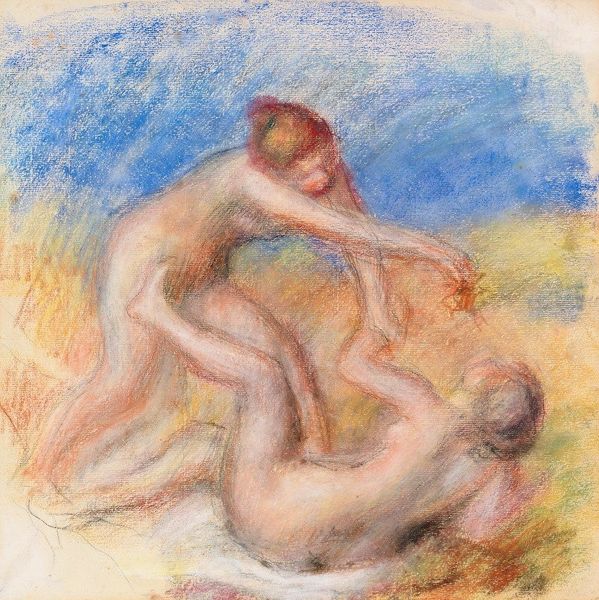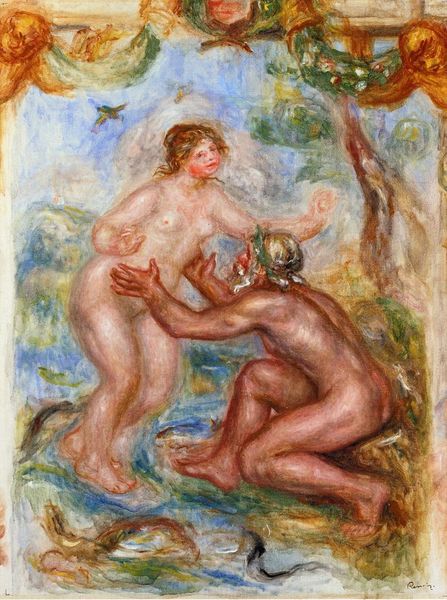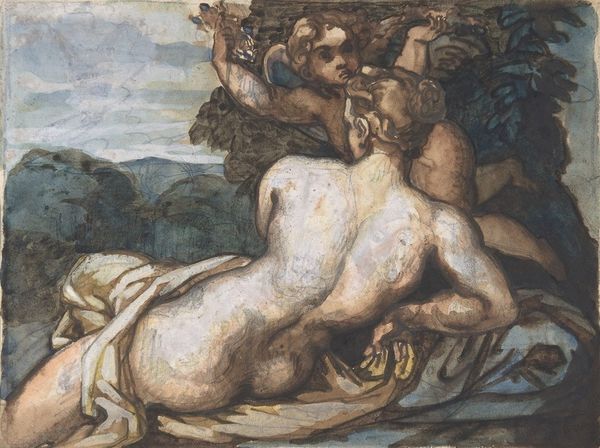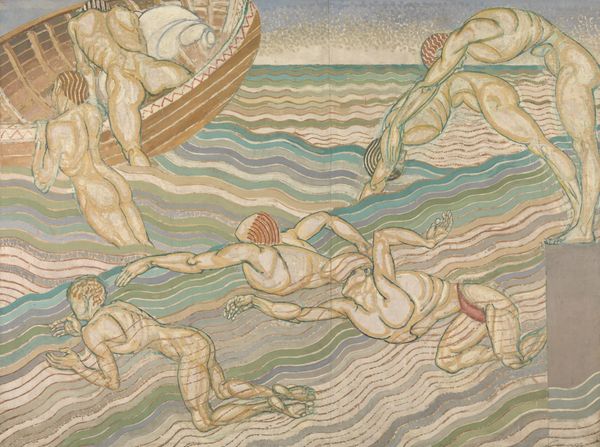
painting, watercolor
#
figurative
#
painting
#
landscape
#
figuration
#
watercolor
#
group-portraits
#
expressionism
#
nude
#
watercolor
#
expressionist
Copyright: Public Domain: Artvee
Curator: Welcome. We’re standing before James Ensor’s “Les Baigneuses,” a watercolor painted in 1916. Editor: It’s striking. The composition evokes a dreamscape, but also feels almost melancholic. The figures seem disconnected despite being together. Curator: Ensor’s approach to materials here is very interesting. Watercolor often signifies lightness, transparency, but he uses it to create something almost heavy, dense. The support itself would've played a role in this feeling, absorbing some of the pigment to produce an earthy final result. Editor: I'm intrigued by the repeating motifs, the mirrored postures of some figures and the serpentine, cloudlike forms looming overhead. The bathers evoke classical images of nymphs, but with a decidedly modern anxiety—their vulnerability on full display. And there's the solitary floating figure; does that resonate with any archetypes? Curator: I'm more compelled by how that visual density obscures conventional representation, defying clear categorisation, blending foreground and background, it reminds us that all forms are provisional and always dependent on processes of artistic labor. And who were these women? Are they symbolic of any social change underway at the time? Editor: Perhaps it is a reflection of internal landscapes instead of a social one? Ensor often incorporates elements of fantasy and the grotesque; those could point to underlying psychological currents. Curator: I'm more focused on the surface than the symbols here, and its manifestation: This painting uses watercolors, meaning that the artwork probably took little time for the artist to create physically compared to that of oil painting. That labor itself informs the social reading we give the image as we begin to explore how the idea of a social gathering is now manufactured through capitalistic exchange Editor: You are making me think... that might reflect in this visual construction of these mythological figures within the reach of our mundane world, these nudes are painted with earth-tones, they aren't ethereal representations, or at least they try not to be. Curator: Yes! Maybe those nude representations also tell something about the conditions and value ascribed to women’s labor in a rapidly industrializing world... Interesting connection there! Editor: Yes, it adds another layer of significance that intertwines social criticism with artistic innovation. Curator: Absolutely, examining "Les Baigneuses" through both material and iconographic lenses really enriches our understanding of Ensor's artistic practice and its relationship to the world around him. Editor: A fruitful combination indeed! I leave with much food for thought regarding our perception of these historical motifs.
Comments
No comments
Be the first to comment and join the conversation on the ultimate creative platform.

